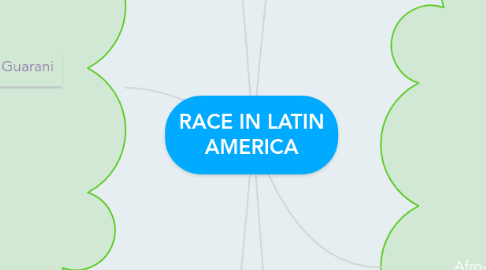
1. Zapatista National Liberation Army
1.1. --EZLN - an army that becan in the 1983 grew as a result of the mistrust in the Mexican government and lack of representation. There wasn an election froud which president Salina reformed article 27 which allowed privatization of ejidos. The Zapatistas had 34 demands, some were free and democratic elections, and autonomu for the indigenour people. The aftermath mexican governemtn lead to another declaration of war. In 1997 the pri was defeated ending 60 years of rule. Womens had rights, the embracement of technology, and global movement.
1.2. - Visual Notebook: EZLN is to give a voice to the indigenous descendants and the mayan people. They reclaimed land, access to education, health care, democracy, and respect and culture. Zapatista communities came together and formed a representation in terms of education, healthcare, and justice. They denied money from the mexican government. They organized their jobs, water, and land. Their camera work helped allow to get to know their stories, education, and songs. the documentaries show their struggle, justice, and sacrafices.
2. Guarani
2.1. The Gunmen: They were threatened and mistrared by the ranchers gunmen. They feared to be killed, they would hit a child, women, or anyone. They suffer while they throw parties because they have more power and money.
2.2. Guarani People from Brazil- Guarani people lived in Paraguay, Argentina, Brazil, and parts of Uruguy and Bolivia before countries and frontiers existed. They are spiritual people and express their words through emotions. They have been affected by the loss of their land. Their leader has been assassinated and their children starve.
3. Brazil and the Myth of a Racial Democracy
3.1. Kimberle Willaism Crenshaw: Racial Democracy in Brazil
3.1.1. She shares how in Brazil that slavery history began hundred years ago and lasted longer since 1888. It involves more people, 10x more Africans in the slave plantations. Many afircans imported that created a society that was much more mixed than the united states. Brazil idea of slavery was the whiten their population of european imigration. Brazil would be that country to get over the history of slavery. She focused on problems of race that black faces do not work in brazil. Their are a handful of blacks in Brazil but are not being focused on. Black peoples re being still discriminated. It may be more than race but more on social class.
3.2. Howard Rethinking Race in Brazil
3.2.1. Afro Brazilians group staged actions and marches on the 100th anniversary of the abolition of slavery in Brazil. UNESCO studied theoretical approaches that focused on racial democracy. They found that the ideology of whitening was a new racial revisionism. Racial formation in contemporary Brazil, they said it was the painfully slow reemergence of civil society. The reapearance of black movements demonstrates the limits of various analyses of Brazilian racial dynamics. From a racial perspective, the black upsurge was the re-emergence of civil society and politician of racial identities. The rememergence of civil society recreated civil society by expanding terrain and politics. Today race and racial identities are contested for more intensly than ever in Brazil. Rethinking about racial formations, process of permanently contested social institutions and perme]anently conflict identities. Brazil still have not yet been identifies.
4. Asian Immigration to Latin America
4.1. Latin America in Asia-Pacific Perspective
4.1.1. - Manila became first Asian colony in the end of the sixteenth century. Spanish barbers in Mexico city complained that the Chinese barbers are competition where they lead them outside of town. There was Asian labor in Latin america from Japanese and Chinese. Chinese coolies were sent to Peru and Cuba where they worked in plantations such as building railroads and mines. Demand for cheap labor remained high,, international cry agaisnt the brutal human trafficing was terminated. Chinese immigrants began arriving and accelerated after the Chinese Exclusion Act. Chinese laborers were imported to Cuba and Peru to substitute African labor.
4.2. Koreans Battle the Odds in Mexico Citys Poorest Barrio
4.2.1. -Tepito focused on the invasion of the Koreans. Koreans arrived in the 1990s where today 50 Korean merchants rent shops to mainly sell womens clothing. Koreans are the scapegoats for Tepitos declining fortunes die to Tepito being the ghetto and poorest city.
5. Afro-Americans
5.1. Blacks in Mexico: A Forgotten Minority
5.1.1. - Yanga was the first town to free African slaves, founded by Gaspar Yanga who led a rebellion against his Spanish masters. There are no blacks who live around the center of town. Like Mexicos history itself, Afro-Mexican population has been relocated to other rural villages. Mestizaje has drove African Mexicans as invisible because their leaders do not count them. These mixed race are being trated not fairly, there are blacks history in Mexico.
5.2. The Cultural Politics of Blackness in Colombia
5.2.1. - Columbia has one of the largest black population. Early black organization in Colombia emerged when Black wanted to be referred to as Negros and in this, small urban intellecutals elite of university students identified themselves as black, These movements emerged from national and transational elements. These organizations looked to other experiences to inform their own positions. The process of constitutional reform consisted of Constituent assembly.

